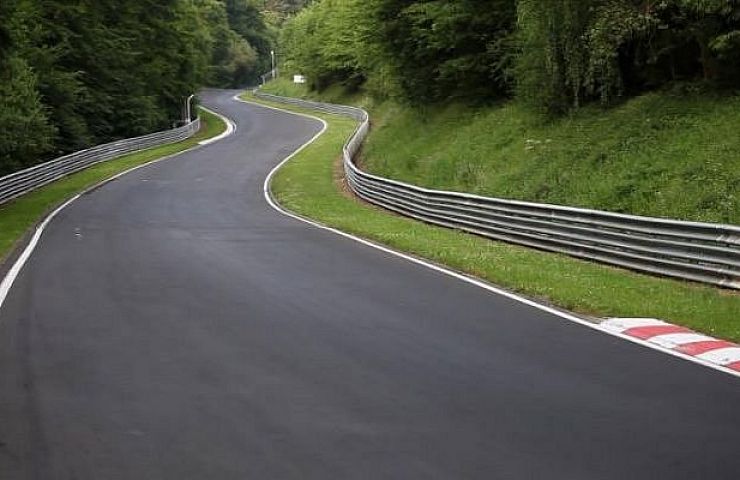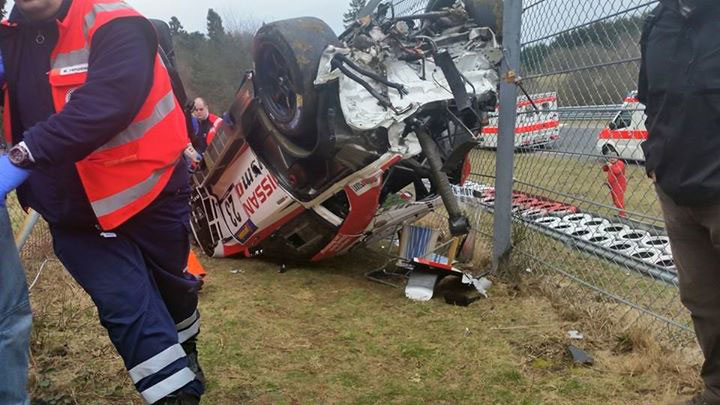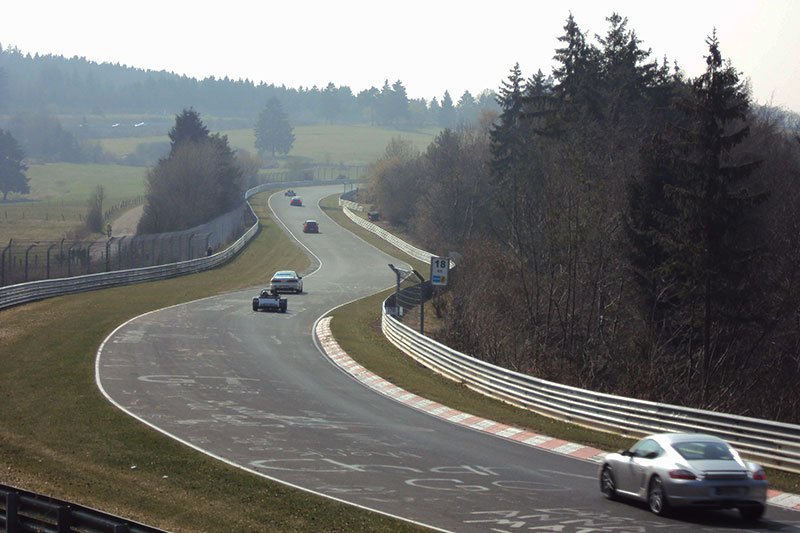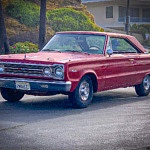Germany’s motoring governing bodies this week approved plans that will lift the speed restriction caps at Nürburgring in 2016. Some alterations—such as new guardrails, catch fences, and a restricted zone for spectators—will be made to the track at the famed Nordschleife section. In addition, the Flugplatz section will be repaved in order to eliminate bumps that caused cars to catch air over the years.
At the opening race of the VLN endurance series in March, Jann Mardenborough’s Nissan GT-R Nismo GT3 went airborne and flipped at the Flugplatz corner—a section named after the German word for airport, due to the common occurrence of cars leaving the ground there. Sadly, Mardenborough’s accident claimed the life of a spectator, even though the individual was behind a safety fence.
The course’s governing entities are Deutscher Motor Sport Bund (DMSB) and Allgemeiner Deutscher Automobil-Club (ADAC).
While track officials do not publish official numbers, there’s evidence for more than 200 fatalities at Nürburgring throughout the years, leading to several substantial changes to the course’s layout over the decades. However, the 12.9 mile Nordschleife section—the portion used most commonly by enthusiasts, auto manufacturers setting lap times, as well as various motorsport series—has remained largely unchanged for decades.
Historic Course
Previous to the construction of the Nürburgring, motorsport races were held in the Eifel Mountains of western Germany. Realizing the need for a dedicated, purpose-built race track, by 1925 plans were submitted to create a new race course. The ambitious design of the Nordschleife portion—initially 14.2 miles—was intended to showcase Germany’s formidable engineering talents.
The construction effort required about 2,500 laborers, with the first race at Nürburgring taking place on June 19, 1927. The result of the designers’ efforts was a racetrack with more than 160 corners in total. Nearly 90 years later, the course is still unparalleled in motorsports. However, as the speed of the vehicles has climbed over the years, the track’s challenging layout has become less forgiving.
Top Speeds
Speed limits have been imposed on key sections, preventing automakers from seeking lap records at the course. Flugplatz, Antoniusbuche and Schwedenkreuz all adopted a 124-mph speed limit, while the Döttinger Höhe section was capped at 155 miles per hour, ostensibly eliminating the use of the course as a viable metric for automotive performance.
Times posted before the speed restriction was imposed—and after the latest round of safety improvements is implemented—likely won’t be comparable. Motorsports officials had to seriously weigh safety concerns against the effect of vehicles’ ability to carry speed through Fluglatz and other sections.
“All parties want to preserve the Nordschleife and its uniqueness,” said DMSB President Hans-Joachim Stuck. “However, we all know that we will have to improve safety. To this end, the Nürburgring as track operator worked hard to devise a set of effective measures…which met with broad approval at this round table.” The track will begin implementing the changes starting in November of this year, with construction paused during the 2016 race season and resuming once it has concluded.







